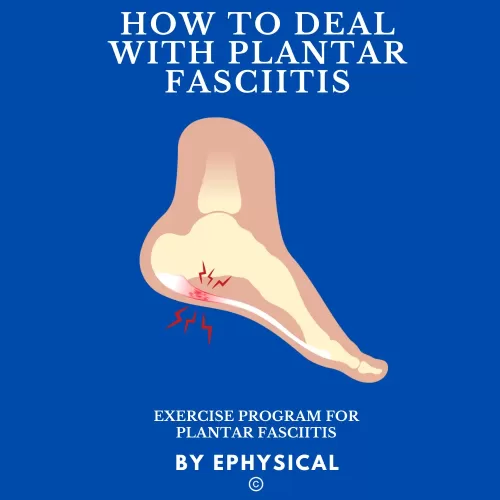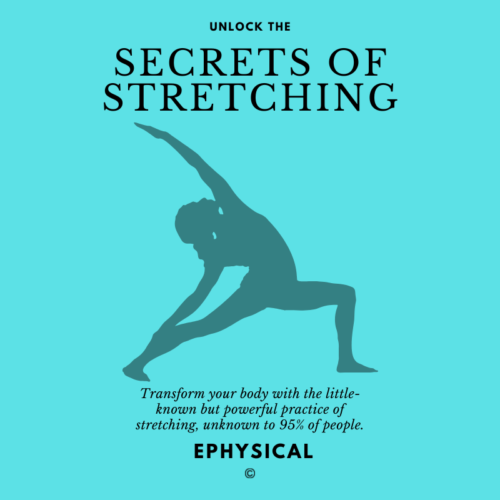13 Ways to Increase Range of Motion
How to Increase Range of Motion?
To get the most out of your training routine and secure long-lasting joint health, you should implement some activities to increase range of motion.
With normal range of motion or flexibility, you will evade injuries, correct posture, functionality and health of joints and surrounding tissue, and feel better.
Limited range of motion is a common joint dysfunctionality nowadays. To avoid further problems, we have created 13 tips for improving flexibility that you can start using today!
Every recommendation can help you with developing your flexibility to some degree. Track your range of motion progress with these simple devices.
See the entire list here:
1. Stretching Routine
One hour of stretching exercises will notably increase the range of motion. No matter how flexible your joints are, everyone will benefit from stretching exercises. You will remove both joint and muscle restrictions and move smoothly. We recommend three sessions per week. We highly suggest starting with basic hip flexibility program.
Exercises that promote end-range movements would be most beneficial for improving flexibility. A simple example would be raising your arm up as much as you can and bending the elbow afterward.
2. Post Workout Stretching
Spending a lot of time in the gym lifting weights is a great way to improve strength and muscle mass, but it comes with a cost. Flexibility often becomes neglected and reduced.
One way to improve flexibility is to add stretching exercises after workout or physical activity. You won’t feel the difference right away, but this routine is a must-have in the long run.
Few simple and efficient exercises for a muscle group trained that day will do the job. The sooner you start, the better result you will have.
3. Stretching with Resistance
If you are stretching daily and feel like you have reached the maximum flexibility, you should try this. Stretching with resistance can help you improve your range of motion even more.
Ofter are resistance bands or light weights enough to stress joint and muscles to become more flexible.
A simple example would be lying straight leg raise with a resistance band. Pull the bend toward your body and stretch the hamstring muscle group even more.
4. Passive Stretching Treatment
Stretching treatment performed by a physical therapist or personal trainer is a great way to improve flexibility and uncover limitations in the range of motion.
Recommended especially for people who sit a lot or are inactive during the week. It helps relieve the pain and tension in the upper or lower back.
5. Aerobic Training
Low-intensity activities such as jogging or swimming can help you increase range of motion in your joints. Active muscles are softer, so they allow move movement for joints.
Using aerobic training as a warm-up is a great way to prepare your body for the upcoming training.
6. Physical therapy
Physical therapy treatments are an exceptional solution when pain is causing a limited range of motion. They reduce inflammation, pain and helps you recover faster. Everything they do will result in an increased range of motion.
7. Foam Roller
Think of foam roller as a massage therapy that prepares your muscles for training. Since they relax muscles, any limitation caused by muscle tissue will be gone. It is not a long-term solution, but the point is to combine foam roller with active exercises afterward.
8. Deep Tissue Massage
Treating muscle tension and stiffness with manual therapy is the most enjoyable way to experience instant pain and tension relief. Often, you will notice that you can move better right away after the massage.
That indicates soft tissue restriction caused by a sedentary lifestyle and poor muscle activation.
The best way to restore healthy joint and muscle function is to combine massage treatments with the physical activity you like.
9. Dry Needling
Another great way to increase range of motion is to fight muscle tension and active trigger points with dry needling treatment.
The treatment gives instant tension relief and increased range of motion. To maintain a long-term effect, you should focus on creating a stretching routine or adding a post-workout stretching.
10. Breathing Exercises
Breathing exercises can increase stretching capacity and therefore influence the range of motion. Learning how to breathe correctly during the stretching exercise relaxes your muscles even more.
Because of that, it should be wise to take a closer look at the connection between breathing and stretching exercises.
The most natural way to breathe is through the abdominal part, activating the diaphragm. Avoid moving the ribcage or shoulders up.
11. Drink More Water
Keeping an optimal muscle function requires water. Muscles are made of water, and dehydration would reduce their function greatly. As a result, you may end up with poor muscle activation and decreased range of motion.
Avoid dehydration by following one simple rule. Drink more water. The formula for proper daily water intake is 1L per 25kg of weight.
12. Avoid Stress
Stress is a bad sign for many things in our body and flexibility is no exception. Poor posture and muscle tension or spasm can be a result of accumulated stress over time.
Without proper treatment such as deep tissue massage, dry needling treatment or physical activity, the flexibility of joints becomes compromised.
Yoga, meditation or hiking can be a good solution for handling stressful days.
13. Healthy Nutrition
Eating anti-inflammatory food reduces joint inflammation and muscle soreness. Food like spinach, nuts, fish and fresh fruit should be a priority in your diet.
Healthy nutrition with a stretching routine is an excellent way to get the best results from your training.
Thank you for reading our blog post. Start exploring other topics here. To stay updated with our latest content, follow use on facebook and instagram.





